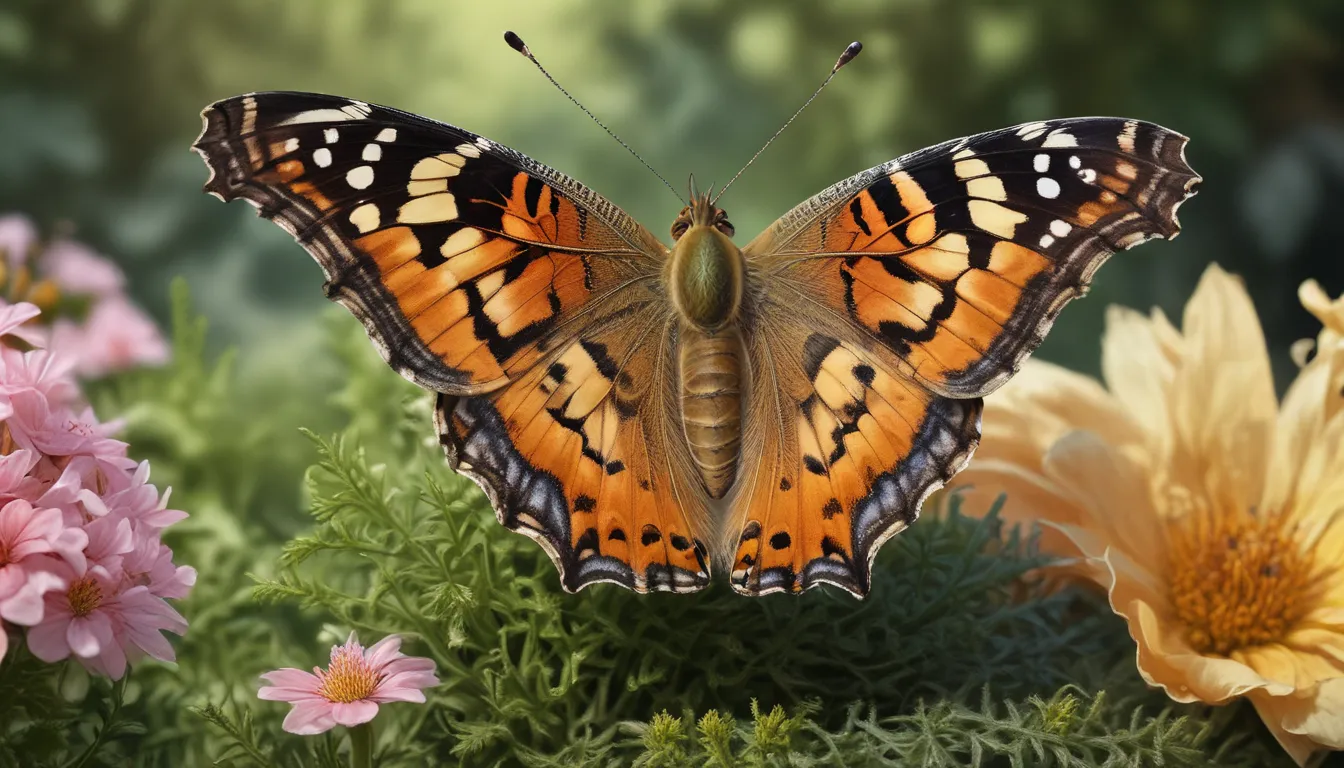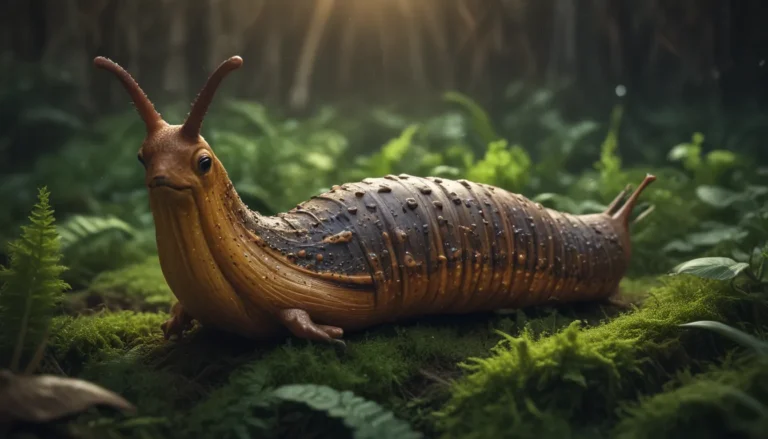The pictures we use in our articles might not show exactly what the words say. We choose these pictures to make you interested in reading more. The pictures work together with the words but don’t take their place. The words still tell you the important facts.
Are you fascinated by the beauty of butterflies and intrigued by their mysterious world? If so, you're in for a treat as we unravel 11 captivating facts about the American Painted Lady butterfly. From its vibrant appearance to its remarkable migration patterns, this butterfly species is truly a wonder of the insect world. So, grab your magnifying glass and let's delve deep into the enchanting world of the American Painted Lady butterfly.
The Resilient and Vibrant American Painted Lady Butterfly
The American Painted Lady butterfly, scientifically known as Vanessa virginiensis, is a resilient and vibrant species found throughout North America. Known for its striking appearance, impressive migration patterns, and cultural significance, this butterfly has captured the hearts of nature enthusiasts and entomologists alike. Let's explore some key takeaways about this captivating insect:
- The American Painted Lady butterfly plays a crucial role as a pollinator and holds cultural significance, representing beauty and transformation.
- Conservation efforts are essential to protect the habitat of these butterflies and ensure their preservation for future generations.
Range and Distribution of the American Painted Lady Butterfly
The American Painted Lady butterfly can be found throughout North America, stretching from southern Canada to as far south as Mexico. This versatile species inhabits a diverse range of habitats, including meadows, open fields, gardens, and even urban areas. Their adaptability to different environments is a testament to their resilience and survival skills.
The Distinctive Appearance of the American Painted Lady Butterfly
One of the most recognizable features of the American Painted Lady butterfly is its distinctive wing pattern. The upper wings boast a striking combination of black, orange, and white spots, while the undersides exhibit a more muted coloration. With a wingspan ranging from 2.5 to 3.5 inches, this medium-sized butterfly is a sight to behold in the natural world.
The Fascinating Life Cycle of the American Painted Lady Butterfly
The life cycle of the American Painted Lady butterfly consists of four stages: egg, larva (caterpillar), pupa (chrysalis), and adult. Females typically lay their eggs on plants belonging to the Asteraceae family, such as thistles and sunflowers. Witnessing the transformation of these butterflies from egg to adult is a truly remarkable journey.
Impressive Migration Patterns of the American Painted Lady Butterfly
Renowned for its impressive migration patterns, the American Painted Lady butterfly undertakes long-distance flights in certain years, traveling hundreds or even thousands of miles. This phenomenon is particularly notable in western North America, where these butterflies showcase their remarkable endurance and navigational skills.
Dietary Preferences of the American Painted Lady Butterfly
As caterpillars, American Painted Lady butterflies feed on a variety of host plants, including thistles, sunflowers, hollyhocks, and mallow. Once they metamorphose into adults, these butterflies primarily rely on nectar from flowers as their primary source of sustenance. Their role as pollinators while seeking nectar is crucial for plant reproduction and ecosystem health.
The Remarkable Adaptability of the American Painted Lady Butterfly
One of the remarkable traits of the American Painted Lady butterfly is its adaptability to different environments. Whether in natural habitats or urban settings, these butterflies thrive and survive, showcasing their resilience and flexibility in diverse conditions. Their ability to thrive in various environments is a testament to their evolutionary success as a species.
Intriguing Mimicry Behavior of the American Painted Lady Butterfly
The American Painted Lady butterfly exhibits a fascinating form of mimicry known as Müllerian mimicry. By sharing similar wing patterns with other toxic butterfly species, these butterflies employ a defense mechanism against predators, showcasing nature's ingenious ways of survival and protection in the wild.
Life Span and Pollination Role of the American Painted Lady Butterfly
On average, the adult American Painted Lady butterfly has a relatively short lifespan of around two to four weeks. However, individuals that embark on migratory journeys can live for several months, showcasing their resilience and endurance. As they visit flowers in search of nectar, these butterflies play a crucial role as pollinators, aiding in plant reproduction and ecosystem balance.
Cultural Significance and Conservation Efforts
The American Painted Lady butterfly has captured the imagination of humans throughout history, celebrated in art, literature, and spiritual contexts. Symbolizing beauty, transformation, and the ephemeral nature of life, these butterflies hold a special place in our hearts and minds. While they are not currently endangered, habitat loss, climate change, and pesticide use pose ongoing threats to the populations of American Painted Lady butterflies. Conservation efforts are crucial to ensure the preservation of this magnificent species and its delicate ecosystem.
The Enigmatic Beauty of the American Painted Lady Butterfly
In conclusion, the American Painted Lady butterfly is a fascinating and enchanting species that showcases nature's beauty and resilience. From their vibrant appearance and migratory behavior to their crucial role as pollinators, these butterflies are truly wonders of the insect world. By appreciating and conserving the American Painted Lady butterflies, we can contribute to the preservation of their delicate ecosystem and ensure a sustainable future for these captivating creatures.
FAQs About the American Painted Lady Butterfly
- Lifespan: The average lifespan of an American Painted Lady butterfly is approximately two to four weeks.
- Migration: Yes, American Painted Lady butterflies are known for their migratory behavior, similar to Monarch butterflies.
- Habitat: American Painted Lady butterflies can be found in a variety of habitats, including meadows, gardens, open fields, and coastal areas.
- Diet: These butterflies primarily feed on nectar from various flowering plants such as thistles, asters, and milkweed.
- Pet Keeping: While possible, American Painted Lady butterflies have specific needs that must be met for their well-being.
- Garden Impact: No, these butterflies are beneficial to gardens as they aid in pollination and pest control.
- Attracting: Planting nectar-rich flowers and providing suitable host plants can attract American Painted Lady butterflies to your garden.
- Predators: Predators include birds, spiders, wasps, and dragonflies.
- Generations: Depending on location, American Painted Lady butterflies can have multiple generations in a year.
- Threats: Habitat loss, climate change, pesticide use, and invasive species are primary threats.
- Distribution: Despite the name, American Painted Lady butterflies are found in Europe, Asia, and parts of Africa.
Indulge in the Wonders of Nature with the American Painted Lady Butterfly
As you explore the enchanting world of the American Painted Lady butterfly, you'll uncover a treasure trove of fascinating facts and insights about these captivating creatures. From their colorful appearance and migratory feats to their cultural significance and conservation needs, every aspect of these butterflies is a testament to the beauty and resilience of the natural world. So, next time you spot an American Painted Lady fluttering by, take a moment to appreciate the wonders of nature and the delicate beauty of these enchanting butterflies.






